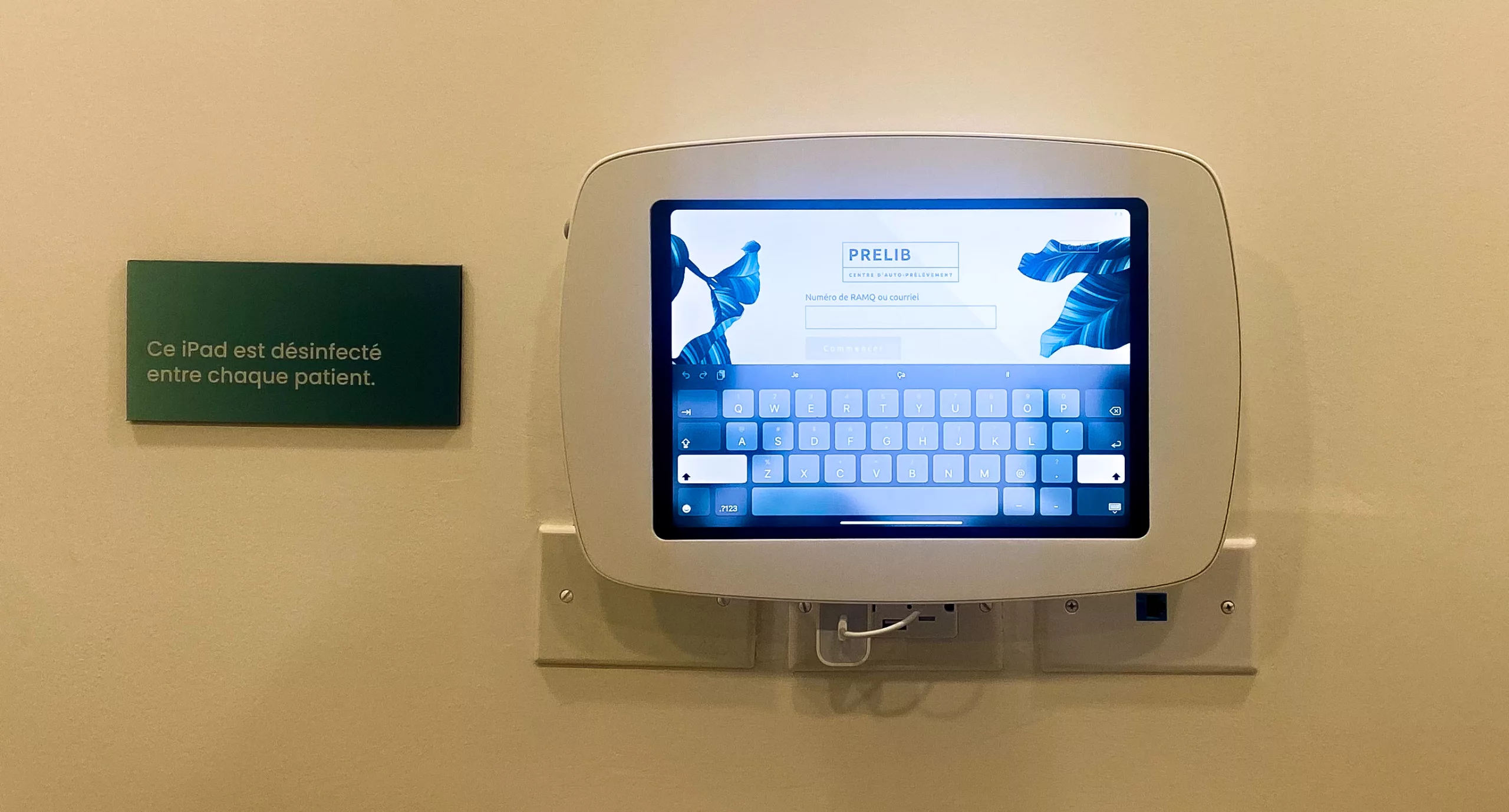Your cart is currently empty!

I Tried Out Self-Sampling for STBBI Screening at Prelib, and Here’s How it Went

This article is presented by Prelib.
A week and four days is the time that lapsed between opening my account on Prelib’s website and receiving my first STBBI test results. Here’s an overview of my experience at Prelib, a self-sampling centre for STBBI screening.
It was 8 p.m. on a Thursday evening in April when I opened a MyPrelib account. At the time, it had been a while since I had last been tested for sexually transmitted and blood-borne infections (STBBIs), and I was quite excited to try self-sampling for the very first time. (I know, even Inever thought I’d ever look forward to an STBBI screening, but I assure you that I was.)
That evening, I answered some basic identification questions, confirmed my email address, and presto! My account was created. A few seconds later, I received an email from Prelib telling me that “regular screening for sexually transmitted infections helps to protect your past, current, and future partners.” Say no more. I clicked on the link to book an appointment.
Tell me who you are and I’ll tell you which test to take
The first step to making an appointment is to create an online account. Once this is done, all you have to do is fill out an online medical questionnaire. The questions are pretty standard. What I particularly liked was that I always had the choice to “prefer not to answer”.
Also, nowhere in the questionnaire was it assumed that all men had penises and all women had vaginas. This was unlike anything I had ever experienced in STBBI screening.
Unsurprisingly, the questions focused on gender, sex, sexual practices, and tobacco, alcohol, and drug use. While going through the questionnaire, I admit to having wondered why certain information was requested of me. For example, whether I had ever had sex in exchange for money or material goods, or if I had ever been incarcerated. However, this didn’t stop me from enjoying my questionnaire experience because I knew that, worst case scenario, I could always not respond if I didn’t feel comfortable.
Once I had completed the questionnaire, Prelib suggested three screening tests for me to take. I emphasize the verb “suggest”, because it’s always possible to refuse (or request) a specific test. I was advised to produce a urine sample and do a throat swab (both for chlamydia and gonorrhea), and a blood test to screen for hepatitis C, syphilis, and human immunodeficiency virus (HIV). I decided to trust the system and made an appointment.
Hooray! There was a free time slot three days from then at the nearest Prelib clinic.
The “open, sesame” of self-sampling
I arrived at the door of the Crescent Centre at the time of my appointment. To enter the building, I entered the code I received by email, and went straight to the check-in station. On the screen, I entered the same code to identify myself and gain access to the waiting area. Once inside, a nurse kindly welcomed me, drew my blood, and walked me through the next steps.
I learned that it’s harder to have your blood drawn on an empty stomach (which was the case for me that morning), and that one of my arms was more generous than the other in terms of offering plump veins that are easier to prick. Friendly advice: if you have to have your blood drawn early in the morning, remember to drink a few glasses of water: it will make the nurse’s job easier and help you pee when the time comes for you to produce a urine sample, if necessary.
Even though the nurse had a bit of trouble finding a vein, because they all seemed to be playing hide and seek in my arm, my time with her lasted five minutes, tops.
Note that even if the service is free, you still need to pay approximately $15 to have the samples shipped to the laboratory for analysis. You can also pay more (the fees vary by test) to have your samples sent to a private lab and get your results within 24 to 48 hours if you feel you can’t wait a couple weeks.
Back to my appointment. The nurse handed me a self-sampling kit consisting of two labelled test tubes containing liquid solutions, a pipette, Q-tips, and a small cup. She kindly walked me to the room where I was going to have a screening date with none other than myself.
A one-on-one with my throat, my urine, and a Q-tip
The self-sampling room looked like a regular large washroom, but with a small screen displaying instructions. There was also a metal container in which to put my samples, which looked a lot like the used menstrual product bins we commonly see in public washrooms. I watched the first video, which instructed me on how to take my urine sample, then the second, which taught me how to take a sample from my throat.

To take my urine sample, I had to pee in a small cup. While my bladder was a little shy that morning, I had just enough pee for the screening test. I then dipped the pipette in the cup to draw my urine and mixed the urine with a solution in the test tube provided for this purpose. Everything was easy to do, and above all, the instructions were super clear: there’s even a line on the test tube that tells you how much urine to put in. When the liquid reached that line, I tightly closed the test tube and placed it on the tray provided for this purpose.
To take a sample from my throat, I rubbed a Q-tip on my tonsils for a few seconds—fighting a gag reflex the whole time—before inserting it into a test tube and mixing it with a solution. It was a lot like doing a COVID-19 screening test, except that the Q-tip wasn’t inserted as deeply. I then closed the test tube and placed it on the tray. As simple as that. In total, your self-sampling shouldn’t take more than five to ten minutes, depending on how comfortable you are with the process.
A week later, I received an email inviting me to make a phone appointment with a medical professional who would tell me my results and explain them. I made an appointment for that very evening.
The person on the phone only took about three minutes to explain to me that I didn’t have HIV, syphilis, or hepatitis C. She added that I was going to have to wait another two or three weeks to find out if I had chlamydia or gonorrhea, and that the results were going to be communicated to me in my online file.
Even though most of the process was done by myself, I have never felt as supported throughout an STBBI screening process as I did at Prelib.
No need to wait for a burning sensation between your legs to go get tested. Consult Prelib’s website to book your next appointment or to learn more about the STBBI self-sampling clinic.





